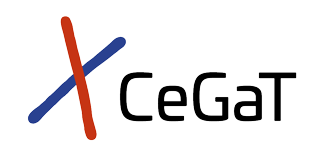Bitzer M1 2 3, Ostermann L1, Horger M4, Biskup S5, Schulze M5, Ruhm K3, Hilke F6, Öner Ö3, Nikolaou K2 4, Schroeder C6, Riess O6, Fend F7 8, Zips D8 9, Hinterleitner M10, Zender L2 8 10, Tabatabai G2 8 11, Beha J3, Malek NP1 2 3 8
Abstract
Purpose: Precision oncology connects highly complex diagnostic procedures with patient histories to identify individualized treatment options in interdisciplinary molecular tumor boards (MTBs). Detailed data on MTB-guided treatments and outcome with a focus on advanced GI cancers have not been reported yet.
Patients and methods: Next-generation sequencing of tumor and normal tissue pairs was performed between April 2016 and February 2018. After identification of relevant molecular alterations, available clinical studies or in-label, off-label, or matched experimental treatment options were recommended. Follow-up data and a response assessment that was based on radiologic imaging were recorded.
Results: Ninety-six patients were presented to the MTB of Tuebingen University Hospital. Sixteen (17%) showed “pathogenic” or “likely pathogenic” germline variants. Recommendations on the basis of molecular alterations or tumor mutational burden were given for 41 patients (43%). Twenty-five received the suggested drug, and 20 were evaluable for best response assessment. Three patients (15%) reached a partial response (PR), and 6 (30%), stable disease (SD), whereas 11 (55%) had tumor progression (progressive disease). Median progression-free survival (PFS) for all treated and evaluable patients was 2.8 months (range, 1.0-9.0 months), and median overall survival (OS) of all treated patients was 5.2 months (range, 0.1 months to not reached). Patients with SD for ≥ 3 months or PR compared with progressive disease showed both a statistically significant longer median PFS (7.8 months [95% CI, 4.2 to 11.4 months] v 2.2 months [95% CI, 1.5 to 2.8 months], P < .0001) and median OS (18.0 months [95% CI, 10.4 to 25.6 months] v 3.8 months [95% CI, 2.3 to 5.4 months], P < .0001).
Conclusion: Next-generation sequencing diagnostics of advanced GI cancers identified a substantial number of pathogenic or likely pathogenic germline variants and unique individual treatment options. Patients with PR or SD in the course of MTB-recommended treatments seemed to benefit with respect to PFS and OS.
- Department of Internal Medicine I, Eberhard-Karls University, Tuebingen, Germany.
- Cluster of Excellence, Image Guided and Functionally Instructed Tumor Therapies, Eberhard-Karls University, Tuebingen, Germany.
- Center for Personalized Medicine, Eberhard-Karls University, Tuebingen, Germany.
- Department of Diagnostic and Interventional Radiology, Eberhard-Karls University, Tuebingen, Germany.
- CeGaT GmbH and Praxis für Humangenetik, Tuebingen, Germany.
- Institute of Medical Genetics and Applied Genomics, Eberhard-Karls University, Tuebingen, Germany.
- Institute of Pathology and Neuropathology, Eberhard-Karls University, Tuebingen, Germany.
- German Cancer Research Consortium, German Cancer Research Center, Heidelberg, Germany.
- Department of Radiation Oncology, Eberhard-Karls University, Tuebingen, Germany.
- Department of Internal Medicine VIII, Eberhard-Karls University, Tuebingen, Germany.
- Interdisciplinary Division of Neuro-Oncology, Eberhard-Karls University, Tuebingen, Germany.
